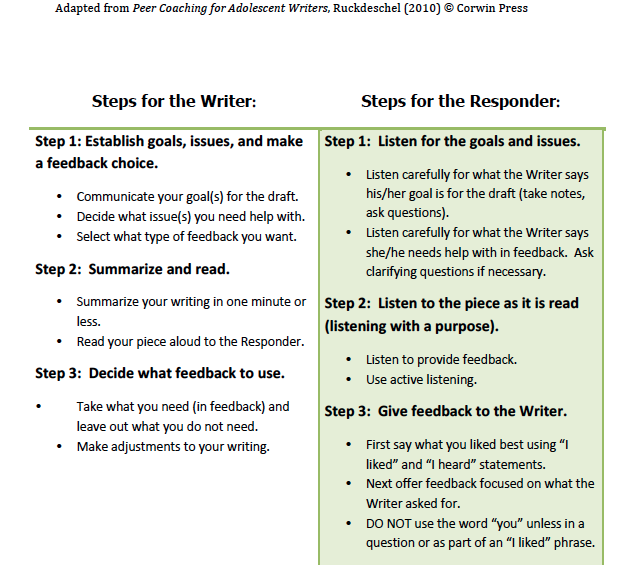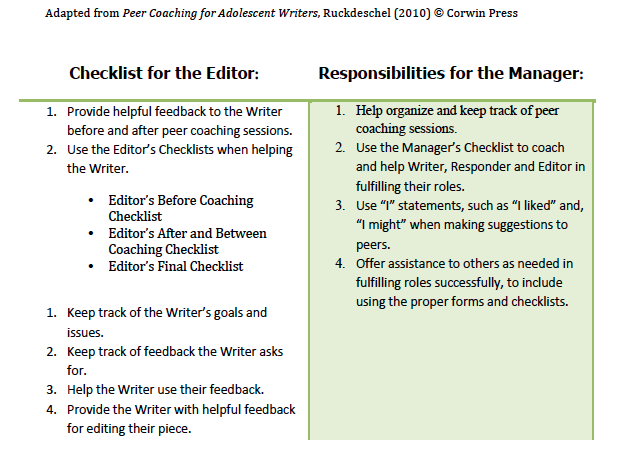Best Practices in Writing for ELLs
x
5. Student Peer Coaching
Peer coaching is an effective way to provide individualized literacy practice for students with diverse needs. It’s an opportunity for them to strengthen those skills that they’re successful with, and those that need more practice. In many schools, trained students peer coaches are highly successful alternatives to mentoring and one-to-one attention in meeting the individual needs of learners. (Brewer, Reid, Rhine, 2003; Ruckdeschel, 2010).
More specifically, teachers can teach students speaking and listening protocols to make peer coaching more effective (Ruckdeschel, 2010). In one study (Moran and Greenberg, 2008) intervention students trained to use peer coaching protocols to review their writing with outperformed honors students on the Ohio OGTs (Moran and Greenberg, 2008). In one protocol for peer coaching (Ruckdeschel, 2010), students set an objective for their writing, identified something they wanted help with, articulated it to a peer in order to receive focused feedback. Here is what a research-based student peer coaching protocol looks using 3 steps throughout 4 student roles:
The Student Peer Coaching Model
Steps for the Writer:
1 – Set a goal for the draft, identify something to seek help with, communicate to a peer
2 - Summarize the writing draft and read it aloud to a peer.
3 – Decide what feedback from the peer to use and apply to revisions.
Steps for the Responder:
1 – Listen to the writer’s goals and issues
2 – Listen to the draft as it is read aloud and read it once to yourself
3 – Provide focused feedback to the writer, based on the writer’s goals and issues.
Responsibilities for Editors:
1 – Provide helpful feedback to writers before and after coaching sessions
2 – Keep track of the writer’s goals and issues
3 – Keep track of feedback the writer asks for
4 – help writers use the feedback they received, deciding what to use and what not to use
5 – Provide writers with helpful feedback when editing their pieces.
Steps for the Manager:
1 – Help the teacher organize and keep track of peer coaching sessions.
2 –Coach and help the Writers, Responders and Editors in fulfilling their role responsibilities.
3 – Use “I” statements, such as “I liked” and “I might” when making suggestions to peers.
4 – Offer assistance to others as needed in fulfilling their roles


Peer coaching materials can be found in the Course Objectives | Research | Materials folder.
